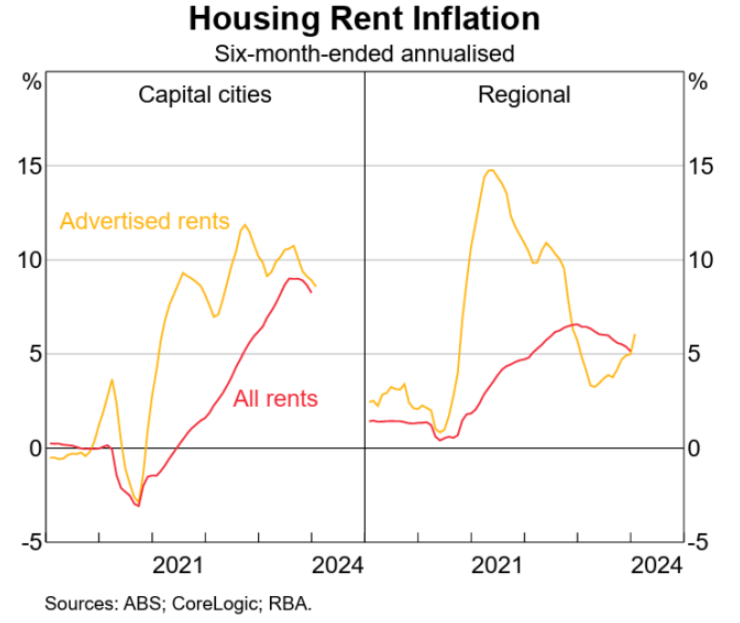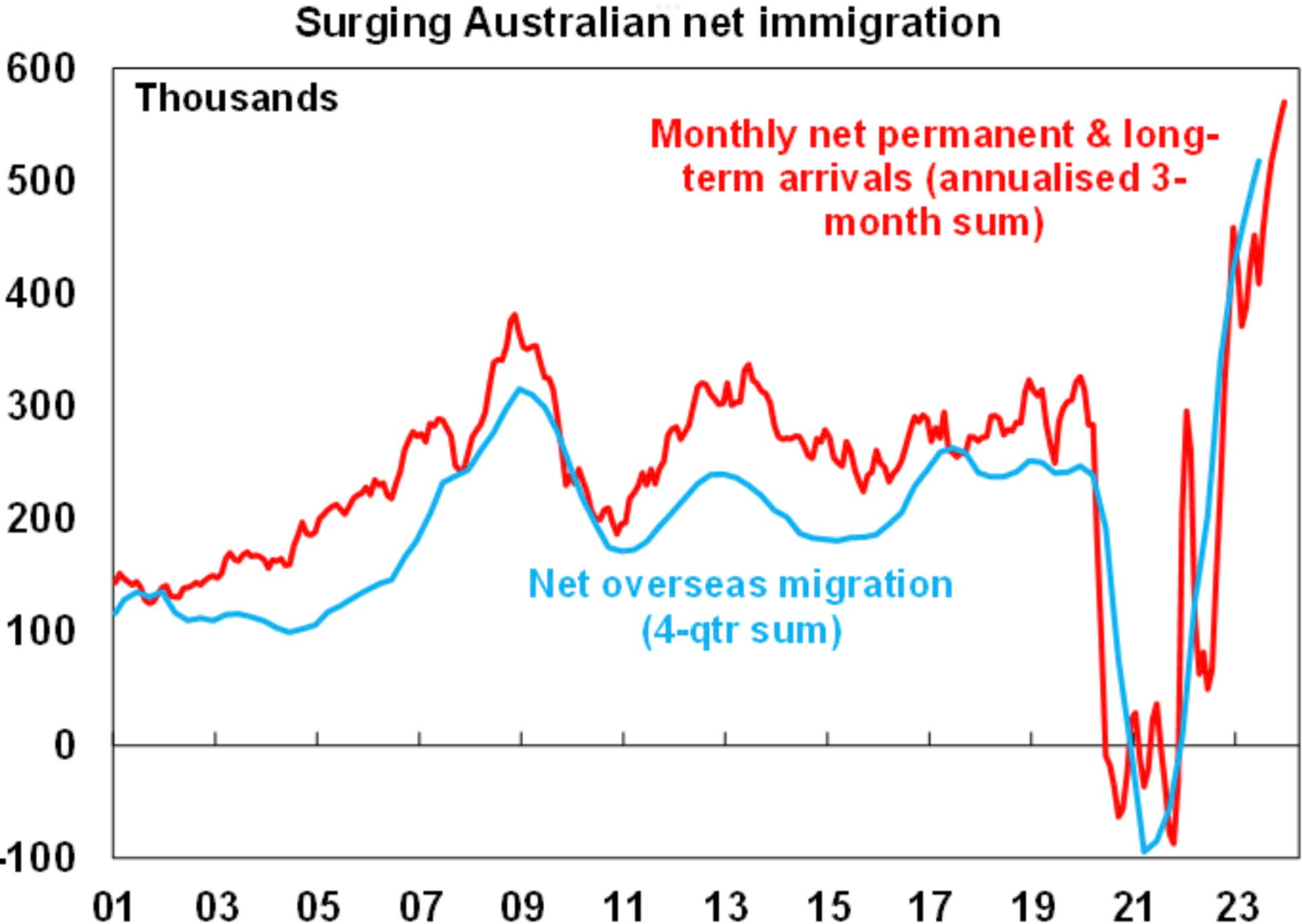The latest RBA Statement of Monetary Policy (SoMP) warned that Australia’s record immigration-fueled population growth is driving rental inflation higher.
The RBA also projected that the situation would continue as demand via population growth outruns new housing supply.

“The rental market remains tight and the ongoing weakness in dwelling investment suggests this is unlikely to ease in the near term”, the RBA SoMP reported.
“This is consistent with a limited supply of new dwellings, strong population growth and a shift in preferences during the pandemic towards more residential space that has led to a lower average household size”.
“Rent inflation remains high, and this is expected to persist because of the ongoing tightness in rental market conditions”, the RBA SoMP said.
Poor rental affordability continues to drive Australians into share housing to ameliorate cost-of-living pressures.
New data from Flatmates.com.au reveals that demand for share housing continued to soar in January, with the platform recording over one million visits and 212,000 active members – its highest month for active members on record.
Flatmates.com.au also saw 67,700 new members join the site in the last month, a 22% increase month-on-month and only 1.4% lower than last year’s record.
Commenting on the result, Claudia Conley, Flatmates.com.au Community Manager, noted that “January marked the busiest month in Flatmates.com.au history, with a record-breaking 212,000 active members using our platform to search for a new home or house mate, an increase of 6% on last year’s record”.
“We also welcomed 67,700 new members who signed up to Flatmates.com.au in the past month, just shy of last January’s record (68,500), highlighting that despite increased membership and traffic over much of 2023, January remained the peak month for share accommodation across the country”, Conley said.
“In good news for room seekers, we’ve had an 18.8% increase in new property listings since the same time last year”.
“Despite this, demand still significantly outweighs supply, with the seeker to lister ratio of many suburbs over 100-1”, Conley warned.
The Australian Bureau of Statistics (ABS) released monthly arrivals and departures data last week, which showed that net long-term arrivals increased even more in the fourth quarter of 2023.

Source: Shane Oliver (AMP)
This suggests that net overseas migration and population growth would have reached new highs in the second half of 2023, increasing demand in the rental market.
At the same time, all forward-looking indicators of residential construction—i.e., approvals, commencements, and completions—have plunged to around decade lows.

This means that the demand-supply imbalance will continue to deteriorate, lowering vacancy rates, raising rents, and forcing more Australians to live in share accommodation or become homeless.

